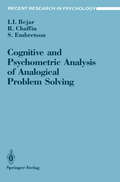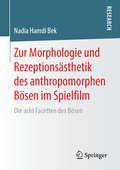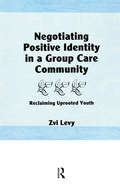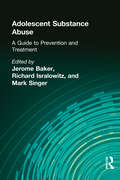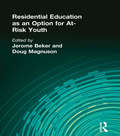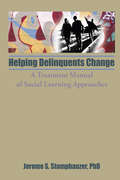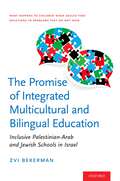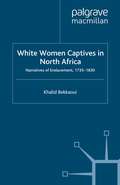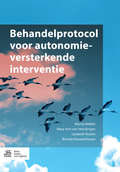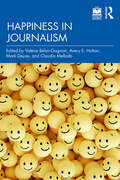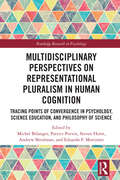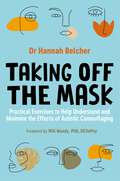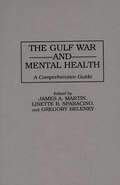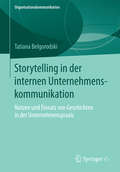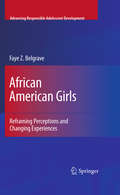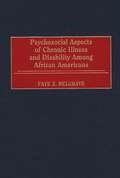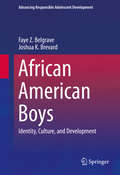- Table View
- List View
Remaking Transitional Justice in the United States: The Rhetorical Authorization of the Greensboro Truth and Reconciliation Commission (Springer Series in Transitional Justice)
by James Edward Beitler IIIRemaking Transitional Justice in the United States: The Rhetoric of the Greensboro Truth and Reconciliation Commission explores rhetorical attempts to authorize the Greensboro Truth and Reconciliation Commission—a grassroots, U.S.-based truth commission created in 2004 toredress past injustices in the city. Through detailed rhetorical analyses, the book demonstratesthat the development of the field of transitional justice has given rise to a transnational rhetorical tradition that provides those working in the field with series of “enabling constraints.” The book then shows how Greensboro stakeholders attempted to reaccentuate this rhetorical tradition in their rhetorical performances to construct authority and bring about justice, even as the tradition shaped their discourse in ways that limited the scope of their responses. Calling attention to the rhetorical interdependence among practitioners of transitional justice, this study offers insights into the development of transitional justice in the United States and in grassroots contexts in other liberal democracies. The volume is a relevant guide to scholars and practitioners of transitional justice as it brings into relief mechanisms of transitional justice that are frequently overlooked—namely, rhetorical mechanisms. It also speaks to any readers who may be interested in the communicative strategies/tactics that may be employed by grassroots transitional justice initiatives.
Cognitive and Psychometric Analysis of Analogical Problem Solving (Recent Research in Psychology)
by Isaac I. Bejar Roger Chaffin Susan EmbretsonIf one were to conduct an analysis of any profession the "ability to think analogically" is more than likely to be one of the requirements for success, be it an architectural studio, a research laboratory, a legal office, or a nuclear plant. Cognitive scientists are aware of the prominence of analogical reasoning in all forms of reasoning and learning, and have devoted substantial effort to ascer taining its nature. Test builders, like cognitive scientists, are aware of the cen trality of analogical reasoning and figure, correctly, that a test that samples a student's ability to think analogically may well be a good predictor of success in a variety of fields. This book is the result of a project to investigate analogical reasoning from both an individual differences and a cognitive perspective. The book is directed to both researchers and practitioners concerned with the nature and measurement of analogical reasoning. Cognitive scientists, linguists, psycholinguists, and natural language researchers will find the seman tic taxonomy and accompanying empirical results food for thought. Test devel opers will fmd it reassuring that performance on verbal analogy items is not just a reflection of the size of a person's vocabulary, and that tests can be designed according to principles, rather than assembled to satisfy a set of statistical speci fications. Psychometricians will find that content and response modelling can go together and that there are distinct benefits in approaching psychometric re sponse modelling from that integrative perspective.
Zur Morphologie und Rezeptionsästhetik des anthropomorphen Bösen im Spielfilm: Die acht Facetten des Bösen
by Nadia Hamdi BekNadia Hamdi Bek befasst sich mit dem scheinbaren Paradox, dass amoralische Charaktere im Spielfilm auch positiv wirken und Faszination auslösen können. Im Fokus stehen dabei die Rekonstruktion der psychologischen Mechanismen bei ihrer Wahrnehmung und Beurteilung durch den Rezipienten sowie die Binnendifferenzierung ihrer Amoral. Im Gegensatz zu herkömmlichen Herangehensweisen zur Erforschung der Rezeptionsästhetik amoralischer Filmfiguren verbindet die Autorin geisteswissenschaftlich orientierte Theorien des Films und der Ästhetik mit der für die Psychologie typischen, dezidiert quantitativen, empirischen Forschungsmethodik.
Negotiating Positive Identity in a Group Care Community: Reclaiming Uprooted Youth
by Jerome BekerIn this readable book, Zvi Levy, Hadassim’s Director, provides a careful account of how, over time, he and others have shaped a community to foster health, identity, and competence in distressed young people. Canadian WIZO (Women’s International Zionist Organization) Hadassim is a thriving youth village in Israel that is home for 500 young people and a day educational program for an additional 1,000. Negotiating Positive Identity in a Residential Group Care Community illustrates the organizational expression of a developmental idea, in this case Erik Erikson’s identity development theory, to show how an environment can be created to cope with disrupted development processes among children and adolescents. The book describes an ongoing experiment that started fifteen years ago and has since been recognized as an outstanding success. The basic information and ideas expressed by Levy can be used to improve the effectiveness of any framework through which adolescents pass during the stages of development, including schools, community centers, and normal families. Some of the main topics discussed in this volume are: principles for running a multicultural facility organization of the daily life of a large residential setting major parameters in a residential setting as derived from the theories of Erik Erikson on adolescence as a developmental stage comprehensive care for youth in transition and adolescents suffering from aggravated identity crisesAll child and youth care workers and program administrators can learn much from Levy’s account of Hadassim. Negotiating Positive Identity in a Residential Group Care Community will be disturbing to many who adhere to the current tenets of good management and child care practice; readers need to be prepared to have many assumptions and beliefs challenged. The book emphasizes the distress of immigrant and troubled urban youth as an aggravated identity crisis, the cause of which needs to be treated before the symptom. This volume is of interest to theoreticians, practitioners, and policymakers in the fields of education, child and youth care, and developmental psychology, as well as scholars in Erikson’s theories. It is also useful in courses which study education in Israel or that seek solutions to problems such as homeless youth in the Third World.Negotiating Positive Identity in a Residential Group Care Community stresses that: The answer to deprivation is not the provision of efficient services, but an environment and an approach that encourages adolescents to see themselves as active participants and not as patients or passive inmates. Residential settings for children and adolescents can successfully handle large numbers and, in fact, larger numbers can offer some definite advantages. The best way to help children develop into autonomous adults is to give them responsibility for their own choices within the framework of a goal-oriented community.
Negotiating Positive Identity in a Group Care Community: Reclaiming Uprooted Youth
by Jerome BekerIn this readable book, Zvi Levy, Hadassim’s Director, provides a careful account of how, over time, he and others have shaped a community to foster health, identity, and competence in distressed young people. Canadian WIZO (Women’s International Zionist Organization) Hadassim is a thriving youth village in Israel that is home for 500 young people and a day educational program for an additional 1,000. Negotiating Positive Identity in a Residential Group Care Community illustrates the organizational expression of a developmental idea, in this case Erik Erikson’s identity development theory, to show how an environment can be created to cope with disrupted development processes among children and adolescents. The book describes an ongoing experiment that started fifteen years ago and has since been recognized as an outstanding success. The basic information and ideas expressed by Levy can be used to improve the effectiveness of any framework through which adolescents pass during the stages of development, including schools, community centers, and normal families. Some of the main topics discussed in this volume are: principles for running a multicultural facility organization of the daily life of a large residential setting major parameters in a residential setting as derived from the theories of Erik Erikson on adolescence as a developmental stage comprehensive care for youth in transition and adolescents suffering from aggravated identity crisesAll child and youth care workers and program administrators can learn much from Levy’s account of Hadassim. Negotiating Positive Identity in a Residential Group Care Community will be disturbing to many who adhere to the current tenets of good management and child care practice; readers need to be prepared to have many assumptions and beliefs challenged. The book emphasizes the distress of immigrant and troubled urban youth as an aggravated identity crisis, the cause of which needs to be treated before the symptom. This volume is of interest to theoreticians, practitioners, and policymakers in the fields of education, child and youth care, and developmental psychology, as well as scholars in Erikson’s theories. It is also useful in courses which study education in Israel or that seek solutions to problems such as homeless youth in the Third World.Negotiating Positive Identity in a Residential Group Care Community stresses that: The answer to deprivation is not the provision of efficient services, but an environment and an approach that encourages adolescents to see themselves as active participants and not as patients or passive inmates. Residential settings for children and adolescents can successfully handle large numbers and, in fact, larger numbers can offer some definite advantages. The best way to help children develop into autonomous adults is to give them responsibility for their own choices within the framework of a goal-oriented community.
Adolescent Substance Abuse: A Guide to Prevention and Treatment
by Jerome Beker Richard Isralowitz Mark SingerAn enlightening discussion of the major issues related to the prevention and treatment of adolescent substance abuse. Information-packed chapters lend a new perspective to the field and suggest implications for practice in services for youth.
Adolescent Substance Abuse: A Guide to Prevention and Treatment
by Jerome Beker Richard Isralowitz Mark SingerAn enlightening discussion of the major issues related to the prevention and treatment of adolescent substance abuse. Information-packed chapters lend a new perspective to the field and suggest implications for practice in services for youth.
Residential Education as an Option for At-Risk Youth
by Jerome Beker Doug MagnusonResidential Education as an Option for At-Risk Youth explores recent residential programs in Israel, draws comparisons with their European counterparts, and recommends practical approaches for the revitalization of such programs in the United States. This volume refutes the conventional professional “wisdom” in the United States that residential group care programs for children and youth are intrinsically flawed and counterproductive. Instead, it delivers effective models for the implementation of effective residential services. The editors and authors demonstrate the growing need for residential programs, given the overburdened family foster care resources, swelling numbers of “zero-parent” families, and homeless youth. Though the United States helped launch and develop residential services in Europe in the aftermath of World War II and has produced many excellent thinkers in the domain of quality residential group care, American programs have languished in recent decades. This book is designed to accelerate and facilitate progress in revamping and establishing excellent residential group care. The authors examine residential education as a developmentally based alternative to the more clinically and correctionally oriented programs for marginal children and youth dominating this field in the United States.The authors present their material in the context of appropriate theoretical principles, yet in practical ways that will permit program developers and managers to implement it effectively. Some of the specific areas chapters discuss are: exemplary Israeli programs as observed by visiting American professional in social work and allied fields important program variables and the cultural influences that may affect them African American experience for such programs a conceptual model for building successful residential education programs key organizational and management considerationsResidential Education as an Option for At-Risk Youth serves as a vital resource for ambitious program developers and managers wishing to reconceptualize and enrich their programs. It will also benefit advanced students, practitioners, and decision makers who have had, heretofore, few resources to rely on when seeking to promote more effective programs for socially marginal children and youth.
Residential Education as an Option for At-Risk Youth
by Jerome Beker Doug MagnusonResidential Education as an Option for At-Risk Youth explores recent residential programs in Israel, draws comparisons with their European counterparts, and recommends practical approaches for the revitalization of such programs in the United States. This volume refutes the conventional professional “wisdom” in the United States that residential group care programs for children and youth are intrinsically flawed and counterproductive. Instead, it delivers effective models for the implementation of effective residential services. The editors and authors demonstrate the growing need for residential programs, given the overburdened family foster care resources, swelling numbers of “zero-parent” families, and homeless youth. Though the United States helped launch and develop residential services in Europe in the aftermath of World War II and has produced many excellent thinkers in the domain of quality residential group care, American programs have languished in recent decades. This book is designed to accelerate and facilitate progress in revamping and establishing excellent residential group care. The authors examine residential education as a developmentally based alternative to the more clinically and correctionally oriented programs for marginal children and youth dominating this field in the United States.The authors present their material in the context of appropriate theoretical principles, yet in practical ways that will permit program developers and managers to implement it effectively. Some of the specific areas chapters discuss are: exemplary Israeli programs as observed by visiting American professional in social work and allied fields important program variables and the cultural influences that may affect them African American experience for such programs a conceptual model for building successful residential education programs key organizational and management considerationsResidential Education as an Option for At-Risk Youth serves as a vital resource for ambitious program developers and managers wishing to reconceptualize and enrich their programs. It will also benefit advanced students, practitioners, and decision makers who have had, heretofore, few resources to rely on when seeking to promote more effective programs for socially marginal children and youth.
Helping Delinquents Change: A Treatment Manual of Social Learning Approaches
by Jerome Beker Jerome StumphauzerHelping Delinquents Change sets before itself a formidable task--that of removing the mystery from the understanding of delinquent behavior. Jerome Stumphauzer offers direct, useful means to work toward altering delinquent behavior. Abandoning an orientation to delinquency that focuses on punishment or medical models, Stumphauzer presents a view of delinquency that emphasizes the learning of adaptive, prosocial behavior, and provides to the youths themselves an opportunity to become engaged in selecting their own goals and methods for changing their behavior. The nondelinquent is presented as an example from whom to learn. The text is nontechnical and useful for students and practitioners alike. The book in intended expressly for those who work directly with delinquents--counselors, teachers, therapists, probation officers, those working in junvenile corrections, and for students of delinquent behavior in psychology, sociology, criminology, and education. Tables, diagrams, references, and indices supplement the text. Helping Delinquents Change is available for classroom adoption. Undergraduate and graduate students in criminology, psychology, counseling, education, and sociology are the primary audience. The book is particularly well-suited as a training manual or supplementary text and an instructor&’s manual is included.
Helping Delinquents Change: A Treatment Manual of Social Learning Approaches
by Jerome Beker Jerome StumphauzerHelping Delinquents Change sets before itself a formidable task--that of removing the mystery from the understanding of delinquent behavior. Jerome Stumphauzer offers direct, useful means to work toward altering delinquent behavior. Abandoning an orientation to delinquency that focuses on punishment or medical models, Stumphauzer presents a view of delinquency that emphasizes the learning of adaptive, prosocial behavior, and provides to the youths themselves an opportunity to become engaged in selecting their own goals and methods for changing their behavior. The nondelinquent is presented as an example from whom to learn. The text is nontechnical and useful for students and practitioners alike. The book in intended expressly for those who work directly with delinquents--counselors, teachers, therapists, probation officers, those working in junvenile corrections, and for students of delinquent behavior in psychology, sociology, criminology, and education. Tables, diagrams, references, and indices supplement the text. Helping Delinquents Change is available for classroom adoption. Undergraduate and graduate students in criminology, psychology, counseling, education, and sociology are the primary audience. The book is particularly well-suited as a training manual or supplementary text and an instructor&’s manual is included.
The Promise of Integrated Multicultural and Bilingual Education: Inclusive Palestinian-Arab and Jewish Schools in Israel
by Zvi BekermanThe Promise of Integrated and Multicultural Bilingual Education presents the results of a long-term ethnographic study of the integrated bilingual Palestinian-Jewish schools in Israel that offer a new educational option to two groups of Israelis--Palestinians and Jews--who have been in conflict for the last one hundred years. Their goal is to create egalitarian bilingual multicultural environments to facilitate the growth of youth who can acknowledge and respect "others" while maintaining loyalty to their respective cultural traditions. In this book, Bekerman reveals the complex school practices implemented while negotiating identity and culture in contexts of enduring conflict. Data gathered from interviews with teachers, students, parents, and state officials are presented and analyzed to explore the potential and limitations of peace education given the cultural resources, ethnic-religious affiliations, political beliefs, and historical narratives of the various interactants. The book concludes with critique of Western positivist paradigmatic perspectives that currently guide peace education, maintaining that one of the primary weaknesses of current bilingual and multicultural approaches to peace education is their failure to account for the primacy of the political framework of the nation state and the psychologized educational perspectives that guide their educational work. Change, it is argued, will only occur after these perspectives are abandoned, which entails critically reviewing present understandings of the individual, of identity and culture, and of the learning process.
The Promise of Integrated Multicultural and Bilingual Education: Inclusive Palestinian-Arab and Jewish Schools in Israel
by Zvi BekermanThe Promise of Integrated and Multicultural Bilingual Education presents the results of a long-term ethnographic study of the integrated bilingual Palestinian-Jewish schools in Israel that offer a new educational option to two groups of Israelis--Palestinians and Jews--who have been in conflict for the last one hundred years. Their goal is to create egalitarian bilingual multicultural environments to facilitate the growth of youth who can acknowledge and respect "others" while maintaining loyalty to their respective cultural traditions. In this book, Bekerman reveals the complex school practices implemented while negotiating identity and culture in contexts of enduring conflict. Data gathered from interviews with teachers, students, parents, and state officials are presented and analyzed to explore the potential and limitations of peace education given the cultural resources, ethnic-religious affiliations, political beliefs, and historical narratives of the various interactants. The book concludes with critique of Western positivist paradigmatic perspectives that currently guide peace education, maintaining that one of the primary weaknesses of current bilingual and multicultural approaches to peace education is their failure to account for the primacy of the political framework of the nation state and the psychologized educational perspectives that guide their educational work. Change, it is argued, will only occur after these perspectives are abandoned, which entails critically reviewing present understandings of the individual, of identity and culture, and of the learning process.
White Women Captives in North Africa: Narratives of Enslavement, 1735-1830
by K. BekkaouiA fascinating anthology of narratives from the period 1735-1830, by European women who recount their enslavement in North Africa. The first such collection, it includes an extensive introduction which links the discourse on contemporary Western women captives in Iran, Afghanistan and Iraq with that of former white captives in North Africa.
Behandelprotocol voor autonomieversterkende interventie
by Marrie Bekker Mary Ann van Helsdingen Liesbeth Rutten Brenda KouwenhovenAngst-, stemmings-, eet- en persoonlijkheidsstoornissen worden vaak in stand gehouden doordat het cliënten ontbreekt aan zelfsturend vermogen. Zij hebben problemen met hun zelfbewustzijn, zijn te (weinig) gevoelig voor anderen en/of hebben moeite met het hanteren van nieuwe situaties.Dit Behandelprotocol voor autonomieversterkende interventie neemt de overkoepelende autonomieproblematiek als uitgangspunt en dringt daarmee door tot de kern van de stoornis. De hier beschreven groepsinterventie grijpt in op cognitief, gedragsmatig, interpersoonlijk en emotioneel niveau. Centraal staat het innovatieve begrip 'autonomie-gehechtheid', waarin voorop staat dat de cliënt het ‘eigen ik’ in verbondenheid met anderen verder ontwikkelt dan wel hervindt.Het protocol voorziet in ten minste vijftien groepsbijeenkomsten van elk twee uur waarin telkens een thema centraal staat, zoals overlevingsstrategieën, omgaan met grenzen, emoties en cognities, en afscheid en terugvalpreventie. Tijdens de bijeenkomsten werken cliënten aan het ontwikkelen en vergroten van hun autonomie: aan het versterken van hun zelfgevoel, het vergroten van hun verbondenheid met anderen zonder zichzelf ‘kwijt te raken’, en aan het makkelijker omgaan met nieuwe situaties. Als gevolg van deze (groeps)interventies zullen cliënten minder klachten ervaren en nieuw gedrag vertonen.Het boek is bestemd voor professionals werkzaam in de GGZ waaronder gezondheidszorg- en klinisch psychologen, psychiaters, psychotherapeuten en zij die daartoe in opleiding zijn.
Happiness in Journalism
by Valérie Bélair-Gagnon Avery E. Holton Mark Deuze Claudia MelladoThis book examines how journalism can overcome harmful institutional issues such as work-related trauma and precarity, focusing specifically on questions of what happiness in journalism means, and how one can be successful and happy on the job. Acknowledging profound variations across people, genres of journalism, countries, types of news organizations, and methodologies, this book brings together an array of international perspectives from academia and practice. It suggests that there is much that can be done to improve journalists’ subjective well-being, despite there being no one-size-fits-all solution. It advocates for a shift in mindset as much in theoretical as in methodological approaches, moving away from a focus on platforms and adaptation to pay real attention to the human beings at the center of the industry. That shift in mindset and approach involves exploring what happiness is, how happiness manifests in journalism and media industries, and what future we can imagine that would be better for the profession. Happiness is conceptualized from both psychological and philosophical perspectives. Issues such as trauma, harassment, inequality, digital security, and mental health are considered alongside those such as precarity, recruitment, emotional literacy, intelligence, resilience, and self-efficacy. Authors point to norms, values and ethics in their regions and suggest best practices based on their experience. Constituting a first-of-its-kind study and guide, Happiness in Journalism is recommended reading for journalists, educators, and advanced students interested in topics relating to journalists’ mental health and emotion, media management, and workplace well-being. This book is accompanied by an online platform which supports videos, exercises, reports and links to useful further reading.
Happiness in Journalism
by Valérie Bélair-Gagnon Avery E. Holton Mark Deuze Claudia MelladoThis book examines how journalism can overcome harmful institutional issues such as work-related trauma and precarity, focusing specifically on questions of what happiness in journalism means, and how one can be successful and happy on the job. Acknowledging profound variations across people, genres of journalism, countries, types of news organizations, and methodologies, this book brings together an array of international perspectives from academia and practice. It suggests that there is much that can be done to improve journalists’ subjective well-being, despite there being no one-size-fits-all solution. It advocates for a shift in mindset as much in theoretical as in methodological approaches, moving away from a focus on platforms and adaptation to pay real attention to the human beings at the center of the industry. That shift in mindset and approach involves exploring what happiness is, how happiness manifests in journalism and media industries, and what future we can imagine that would be better for the profession. Happiness is conceptualized from both psychological and philosophical perspectives. Issues such as trauma, harassment, inequality, digital security, and mental health are considered alongside those such as precarity, recruitment, emotional literacy, intelligence, resilience, and self-efficacy. Authors point to norms, values and ethics in their regions and suggest best practices based on their experience. Constituting a first-of-its-kind study and guide, Happiness in Journalism is recommended reading for journalists, educators, and advanced students interested in topics relating to journalists’ mental health and emotion, media management, and workplace well-being. This book is accompanied by an online platform which supports videos, exercises, reports and links to useful further reading.
Multidisciplinary Perspectives on Representational Pluralism in Human Cognition: Tracing Points of Convergence in Psychology, Science Education, and Philosophy of Science (Routledge Research in Psychology)
by Michel Bélanger Patrice Potvin Steven Horst Andrew Shtulman Eduardo F. MortimerBringing together diverse theoretical and empirical contributions from the fields of social and cognitive psychology, philosophy and science education, this volume explores representational pluralism as a phenomenon characteristic of human cognition. Building on these disciplines’ shared interest in understanding human thought, perception and conceptual change, the volume illustrates how representational plurality can be conducive to research and practice in varied fields. Particular care is taken to emphasize points of convergence and the value of sharing discourses, models, justifications and theories of pluralism across disciplines. The editors give ample space for philosophers, cognitive scientists and educators to explicate the history and current status of representational pluralism in their own disciplines. Using multiple forms of research from the relational perspective, this volume will be of interest to students, scholars and researchers with an interest in cognitive psychology, as well as educational psychology and philosophy of science.
Taking Off the Mask: Practical Exercises to Help Understand and Minimise the Effects of Autistic Camouflaging
by Hannah Louise Belcher'I realised I had been camouflaging my whole life - I'd been trying to mask my autistic traits and fit in with all the non-autistic people around me.'Growing up autistic can often feel as though you have to become a chameleon in social situations, camouflaging yourself to fit in with a seemingly neurotypical world. Combining lived experience with scientific research and practical advice, this book is the essential guide to understanding why you mask and how to feel confident without one.Focusing on diagnostic devices like the Camouflaging Autistic Traits Questionnaire (CAT-Q) to discover the situations in which you mask the most and why, alongside a range of techniques, from CBT, compassion based therapy, DBT, and mindfulness to relieve anxiety and reduce stress, this guide gives you all the tools and confidence you need to re-connect with yourself, the things you love and finally, take off your mask.
Taking Off the Mask: Practical Exercises to Help Understand and Minimise the Effects of Autistic Camouflaging
by Hannah Louise Belcher'I realised I had been camouflaging my whole life - I'd been trying to mask my autistic traits and fit in with all the non-autistic people around me.'Growing up autistic can often feel as though you have to become a chameleon in social situations, camouflaging yourself to fit in with a seemingly neurotypical world. Combining lived experience with scientific research and practical advice, this book is the essential guide to understanding why you mask and how to feel confident without one.Focusing on diagnostic devices like the Camouflaging Autistic Traits Questionnaire (CAT-Q) to discover the situations in which you mask the most and why, alongside a range of techniques, from CBT, compassion based therapy, DBT, and mindfulness to relieve anxiety and reduce stress, this guide gives you all the tools and confidence you need to re-connect with yourself, the things you love and finally, take off your mask.
The Gulf War and Mental Health: A Comprehensive Guide
by G L Belenky James Martin Linette SparacinoThe brief, successful Gulf War resulted in few casualties, but there were still recognizable pockets of trauma. This study examines the Mental Health Services available in the theater of operations, the preparations made to train the soldiers for the stress of combat, and details of how they coped with the experience of combat. It assesses the Gulf War in terms of mental health. Some attention is also given to the phenomenon named Gulf War Syndrome. The authors conclude that United States Military Forces were not prepared for the mental health requirements of combat.
Storytelling in der internen Unternehmenskommunikation: Nutzen und Einsatz von Geschichten in der Unternehmenspraxis (Organisationskommunikation)
by Tatiana BelgorodskiTatiana Belgorodski untersucht erstmals das Erzählen von Geschichten, das Storytelling, mit Blick auf die interne Unternehmenskommunikation. Sie zeigt auf, wie Geschichten wirken und von welchen Einflussfaktoren ihr Nutzen für die interne (Change-)Kommunikation abhängt. Vor dem Hintergrund kognitions- und sozialpsychologischer Erkenntnisse werden Risiken und Chancen von Storytelling diskutiert, Interviews mit Unternehmensvertretern gewähren einen Einblick in die Praxis des Geschichtenerzählens in einem globalen Pharmaunternehmen. Die Autorin liefert eine umfassende Darstellung und Bewertung unterschiedlicher Storytelling-Beispiele und entwickelt ein Modell zum Einsatz und Nutzen des Storytellings für Kommunikationsmanagerinnen und -manager sowie Führungskräfte.
African American Girls: Reframing Perceptions and Changing Experiences (Advancing Responsible Adolescent Development)
by Faye Z. BelgraveOver the past 15 years, I have had the opportunityto conduct research and interv- tion programming with African American girls. Several of my graduate students, mostly African American women, pursuing their doctorates in psychology worked closely with me in this work. We have conducted hundreds of literature reviews, read many journal articles and reports, published many papers, and engaged over a thousand African American adolescent girls in a cultural curriculum speci?cally designed for them. This book was written to summarize this work and was c- ceived to be an educational resource for diverse audiences who work with African American girls including: (1) researchers who conduct research and intervention programming; (2) professionals who work with African American adolescent girls such as teachers, social workers, prevention specialists, therapists and counselors, and mental health workers; and (3) a general audience of persons with an interest in African American adolescent female’s well-being and developmentsuch as parents, community leaders, girl’s group leaders (i. e. , Girl Scout leaders), and church and spiritual leaders. This book is both descriptive and practical. Each chapter covers the most current literature on African American adolescent girls, and reviews and discusses ways in which they are similar to and unique from girls in other ethnic groups and from African American boys. An understanding of who they are and how they function allows us to make recommendations about ways to support these girls and to re- cus and/or strengthen already positive attributes.
Psychosocial Aspects of Chronic Illness and Disability Among African Americans
by Faye Z. BelgraveOne out of every seven working age African Americans has an impairment that affects functioning in activities of daily living. These statistics suggest that most African Americans are touched by disability. This book examines the psychosocial aspects of disability and chronic illness using a culturally congruent framework. Chapters address prevalance, health and rehabilitation utilization patterns, the role of culture, empirical research, and strategies for improving mental health and functional outcomes. This book will be useful to professionals who work with people with disabilities, policymakers, and consumers, as well as faculty and students in rehabilitation, health, and African American courses.
African American Boys: Identity, Culture, and Development (Advancing Responsible Adolescent Development)
by Faye Z. Belgrave Joshua K. BrevardThis book discusses current research on identity formation, family and peer influences, risk and resilience factors, and concepts of masculinity and sexuality in African American boys. Sorting out genuine findings from popular misconceptions and misleading headlines, this concise and wide-ranging reference covers the crucial adolescent years, ages 11-16, acknowledging diversity of background and experience in the group, and differences and similarities with African American girls as well as with other boys. In addition, the authors review strengths-based school and community programs that harness evidence and insights to promote pro-social behavior. Featured areas of coverage include: The protective role of ethnic identity and racial socialization.Family management, cohesion, communication, and well-being.Development and importance of peer relationships.Health and well-being.Theoretical perspectives on educational achievement.Factors that contribute to delinquency and victimization.What works: effective programs and practices.African American Boys is an essential resource for a wide range of clinicians and practitioners – as well as researchers and graduate students – in school and clinical child psychology, prevention and public health, social work, mental health therapy and counseling, family therapy, and criminal justice.

